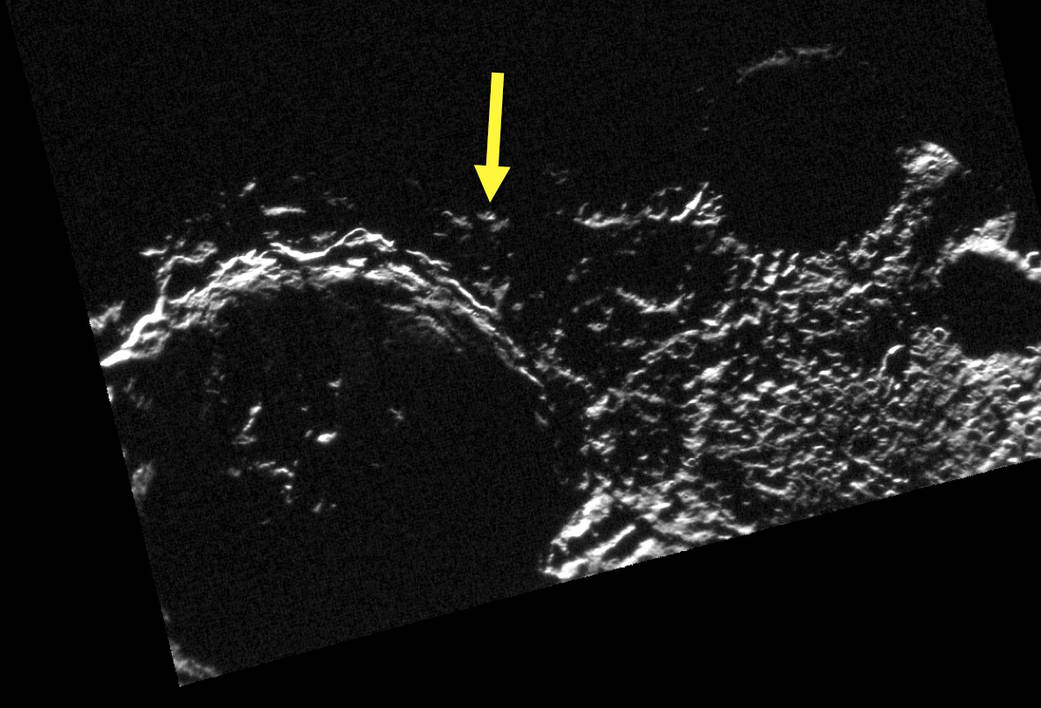
Studies of the illumination conditions near the north and south poles of Mercury are of interest because they can be used to determine locations of permanent shadow, extremely cold places where ice deposits lurk. However, the illumination maps also reveal the locations that receive the maximum duration of sunlight during a Mercury solar day. A “peak of eternal light” that is illuminated continuously for an entire solar day would be a favorable target for a lander, because solar power would be available all the time. So far, no such peak of eternal light has been identified at Mercury’s south pole. The spot that get the most illumination (about 82%), is located at 89° S, 50.7° E. This place is indicated by the arrow in today’s image.
Date acquired: December 24, 2011Image Credit: NASA/Johns Hopkins University Applied Physics

























